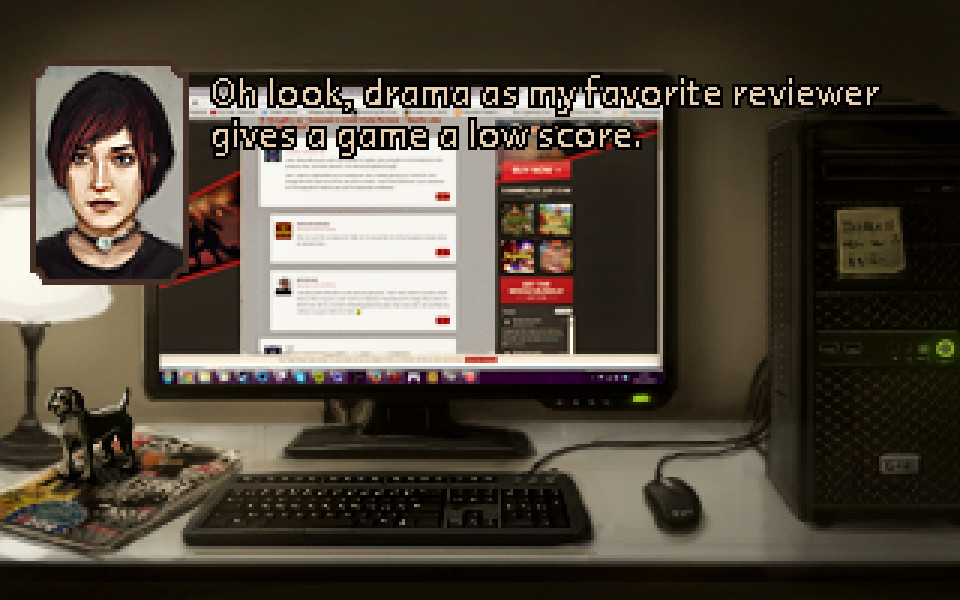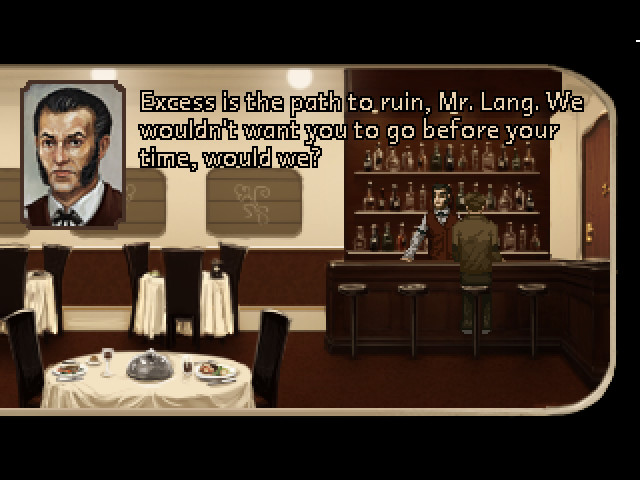The Charnel House Trilogy - Review
I think trying to view The Charnel House Trilogy as, well, a trilogy, is what made it the most difficult to fully comprehend. Though it’s split into three acts, each piece of The Charnel House is neither its own self-contained experience, nor a strictly sequential collection of three distinct stories. Each act may feature the same characters to tie them together, but it’s the subtle thematic elements that ultimately connect them meaningfully, requiring each part exist on its own so as to allow a better appreciation of the whole. Everything begins with “Inhale”, the first and weakest episode but the one which serves to divert your expectations of what The Charnel House is before moving on to the main course. It’s the shortest episode and the one most grounded in reality. Alex Davenport is preparing to leave her apartment after a nasty breakup has left her life in a rather unpleasant place, too connected to her current residence to allow her to stay there any longer.

“Inhale” feels important because its tone is so drastically different from the acts which follow. There’s a lot of references to video games and gaming culture, at times being a little too self indulgent and making it hard to buy into Alex’s character when she’s constantly cracking jokes that tend to fall flat. This isn’t what The Charnel House is though, and why I feel it doesn’t largely detract from what follows. We’re introduced to the lead characters in a way that’s a little eerily unnatural. It gives the impression something is off about all of this without ever actually showing it, which left me unprepared for the horrific turn the next two acts would take.
“Sepulchre”, which was actually originally released on its own years ago, takes us away from Alex for some time to introduce us to Doctor Harold Lang and possibly the most important character in the game: the train our characters find themselves mutually travelling on. It’s an inexplicably empty locomotive for what is ostensibly a regularly used passenger train, and those who are present seem all too calm and deflective when asked where exactly the other passengers are.

“Sepulchre” is horror that is constantly trying to reassure you and tell you it's not. Character interactions become odder and odder, hinting at histories neither you nor your character fully understands, as they continue to try to believe it’s all a bizarre dream. The act got under my skin the more time I spent trying to make sense of it all. Very little is ever shown, but it’s what’s included, and how increasingly distressing that becomes which truly terrifies. It’s probably the only episode which could effectively be taken on its own, but in the greater context of The Charnel House it acts better as a foreshadowing of what’s to come.
The final act, “Exhale”, is when the pieces are aligned and The Charnel House stops playing with supernatural horrors in exchange for the far more alarming terrors of reality. We meet Alex again, now on the same train as Lang, but in a wholly different environment of her own making. “Exhale” is more terrifying than either previous episode, and it’s do to its horror being a product of the world we live in.

The monsters here aren’t demonic abominations, but twisted, disturbing people whose delusions are unsettlingly real. The Charnel House never presumes to be more clever than it is, but that only makes the plain evil and panic expressed by its characters that much more affecting. It struck a nerve with me the way no paranormal entity could, each line feeling like a raw plea for help when nobody is listening.
Indeed it’s how relaxed everyone but Alex stays that hit home the most, mirroring the dismissive ignorance so often shown by people when someone tries to tell them something horrible is happening. Empty condolences are made, blind eyes are turned, and it’s not until Alex’s life is threatened that anyone seems to understand exactly the extent of what is happening. It’s a kind of intensely grounded psychological horror that I find most chilling, because it’s something you don’t want to believe is real even though you know it could be.
Final Word
I didn’t know what The Charnel House Trilogy was going to be when I started it up. I assumed it would be narrative focused, perhaps in a traditional adventure game format, with a cast of familiar (and surprisingly competent) voice actors. What I got was a somewhat uneven, but ultimately remarkable horror story that seems to be only starting. Part of me is saddened by the current lack of resolution to many of the arcs began here, but more than that I’m excited with where this could go from here, having surprised me as much as it did.

